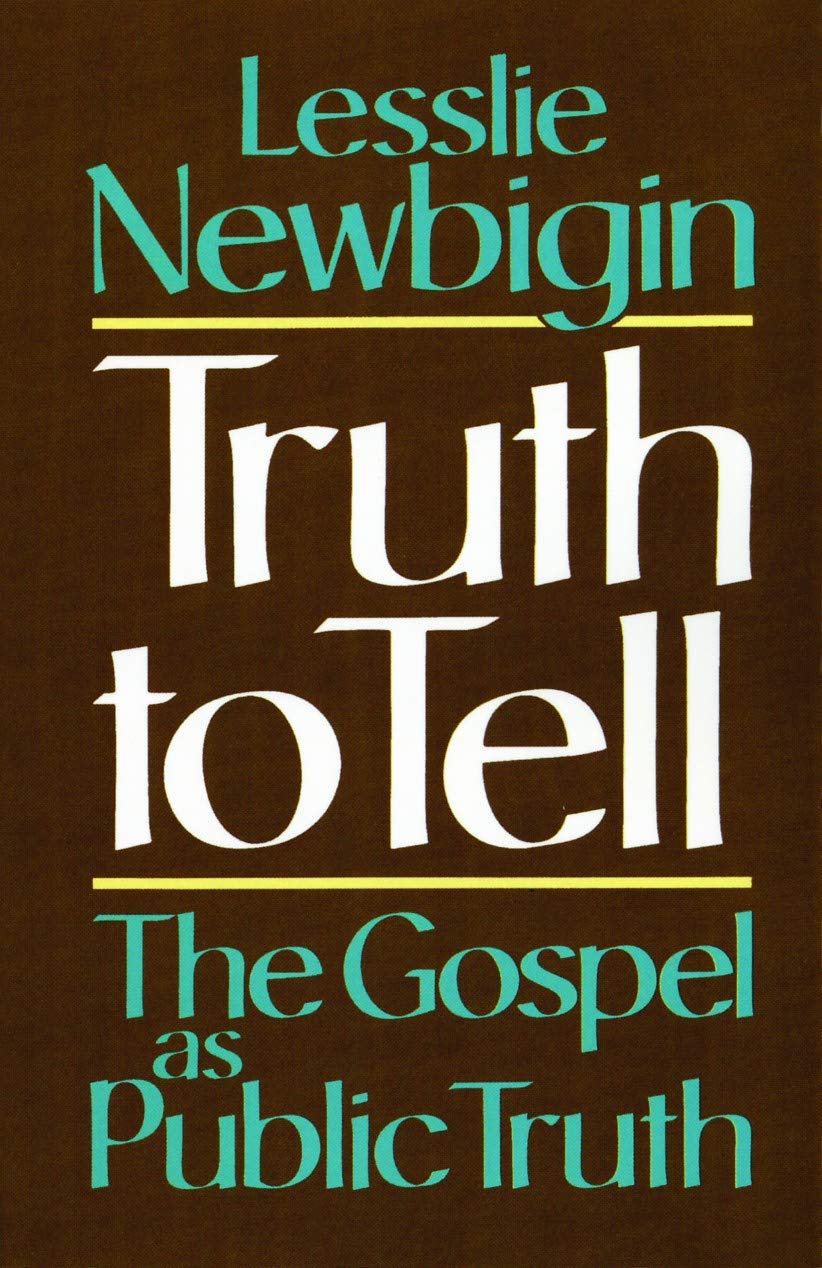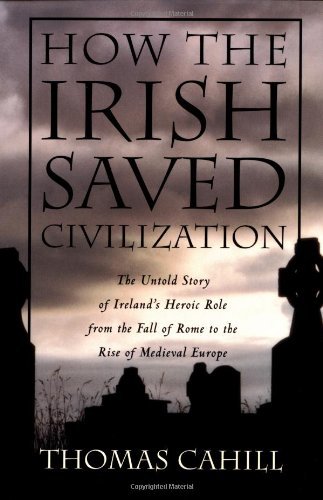
A mind needs books
as a sword needs a whetstone,
if it is to keep its edge.
(George R. R. Martin)
This is one of those posts where I write a few mini-reviews about books you might like.
It was not easy to select just four of the books I have read recently and recommend. My title suggests the broad themes for each of my choices.
I invite you to make your recommendations for me.
Without further introduction, here are the four mini-reviews.
Truth to Tell: The Gospel as Public Truth by Lesslie Newbigin (1991)

What is truth?
The Roman governor, Pontius Pilate, asked that question, as he tried the Lord Jesus (John 18:38). Although he was facing the One who is “the Truth,” Pilate did not wait for an answer, whether because he was not interested, or it was irrelevant in his mind—after all, he had the full weight of the Roman empire, and “truth” was what he said it was.
Of course, “might makes right”—whether political, cultural, or ideological—does not determine truth. So, what is truth, and how should a follower of Jesus communicate truth?
Enter Lesslie Newbigin (1909-1998), a British theologian, missiologist, and author who spent much of his career serving in India, who helps us grapple with our questions.
The material in this little book (90 pages) was presented as the Osterhaven Lectures at Western Theological Seminary. His concern is to confront and correct the dominant paradigm that determines what is considered acceptable truth in the public sphere. The book is set out in three lectures or chapters:
- Believing and Knowing the Truth,
- Affirming the Truth in the Church, and
- Speaking the Truth to Caesar.
In this work, he unmasks “the false ideal of objectivity which has the effect of devaluing all kinds of knowledge which are not amenable to demonstration by methods of natural science” (42). For instance, trustworthy witnesses are a legitimate basis for determining the truth in both historical and courtroom settings.
Newbigin further argues convincingly that the witness of the Bible—God’s revelation in Jesus Christ—is the legitimate starting point for public truth. He also provides glimmers of practical insights of how individual Christians and Christian congregations can be active as a “subversive agent” (82) in bringing about the needed shift in communicating the truth effectively.
This book is readable, relevant, and well worth reading.
Here is a link to download a free copy of Telling the Truth.
How the Irish Saved Civilization: The Untold Story of Ireland’s Heroic Role from the Fall of Rome to the Rise of Medieval Europe by Thomas Cahill (1995).

This title might surprise you. It surprised me.
Years ago, I practised with a lawyer who had Irish roots and a sense of humor. When he suggested this title, I dismissed it as another of his jokes. After other acquaintances recommended it, I finally read it and was glad I did.
Thomas Cahill (1940-2022) was a scholar and author. This book was the first in a proposed series of seven “Hinges of History.” He completed six by the time of his death.
Here is a brief overview.
During the 5th Century, the Roman Empire in the West was in an accelerated state of collapse. Alaric the Goth had sacked the City of Rome in 410. Romulus Augustulus reigned as the last emperor of the Western Empire (475-76).
This same era also saw the evangelism of the Irish, a warrior race, on an island “off the beaten track.” A significant number of the population had become Christians by the end of the 5th Century.
Much of classical antiquity was destroyed or lost during this period, marking the beginning of the Dark Ages. However, Ireland became a sanctuary of civilization, receiving refugee scholars and their documents. Monasteries, in the environment of a supporting population, established Christian centers of learning and living that preserved the seeds of “civilization.”
Much later, Irish monks and others moved into continental Europe, reintroducing the seeds of civilization they had preserved.
Positing a decline (even collapse) of modern Western civilization as we now know it, Cahill concludes with these words (218):
If our civilization is to be saved –forget about our civilization, which, as Patrick would say, may pass “in a moment like a cloud or smoke that is scattered by the wind’—if we are to be saved, it will not be by Romans but by saints.
Cahill’s second hinge, The Gifts of the Jews: How a Tribe of Desert Nomads Changed the Way Everyone Thinks and Feels, is already among my books to be read.
The Love That Is God: An Invitation to Christian Faith by Frederick Christian Bauerschmidt (2020).

God is love.
(1 John 4:8, 16)
Bauerschmidt is a theology professor at Loyola University.
His short book elaborates on a sermon he delivered, the text of which is included as an epilogue. Sarah Coakley provides a foreword, followed by five chapters, beginning with “God is love” and then exploring what that means in the context of Christ’s crucifixion, in friendship with the resurrected Christ, among and toward one another, and in the community created by the Holy Spirit.
He concludes with a summary of his theme (94):
“… that God is love, that the love that is God is crucified love, that we are called to be friends with the risen Jesus, and that we cannot love God without loving each other.”
As the subtitle indicates, this serves as an invitation to the Christian faith. Along the way, He explores topics such as belief, love, prayer, the Church, and the Lord’s Supper (Eucharist).
Regarding the Atonement, rather than penal substitution, he proposes an explanation rooted in God’s love, asserting that “God wants Jesus to live this way even though God knows that such a life will get him killed” (35).
Although you may not share the author’s denominational affiliation, there is much to reward and encourage the thoughtful reader.
The Message of John by Bruce Milne (revised 2020)

Have you ever read a Bible commentary from cover to cover?
I don’t mean simply consulting a commentary and reading a bit of it on a text you want to understand better. I mean, you actually read the commentary from beginning to end.
On several occasions, I read a commentary in this way with great benefit.
Bruce Milne’s volume on the Gospel of John is the commentary I have read most recently. Of course, I am primarily reading the text of John’s Gospel—the commentary is my companion in this reading.
Milne’s knowledge and writing style combine wonderfully to give helpful, understandable, and enriching insights into the holy and ancient text of John. He brings understanding and encourages the practical expression of what you learn.
I encourage you to read a book of the Bible carefully, intelligently, and thoroughly, accompanied by a reliable commentary as your guide.
Not every commentary can be read in this manner. Two reliable commentary series that lend themselves to this kind of reading in both the Old and New Testaments are:
- The Bible Speaks Today (which includes Milne’s contribution), and
- The Tyndale Commentaries.
Perhaps you will begin with John’s Gospel.
I hope you enjoyed these mini-reviews.
Here’s the link to the Book Reviews resource, where you will find other reviews.
Please do not forget to share your recommendations, along with the reasons behind them. You can reach me using this link.
FORWARD TO 4 Formative Books in My Life (Part 1)
BACK TO 5 Book Reviews for You
Photo credit: DepositPhotos.com
Click "yes" to receive resource-rich newsletters.
Helpful resources provided to 'living theology' subscribers.
YES!